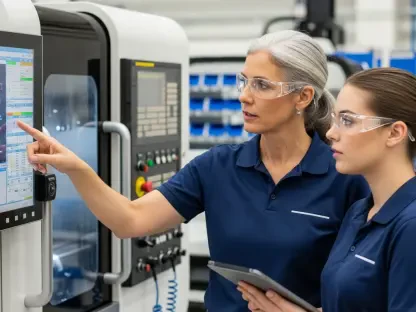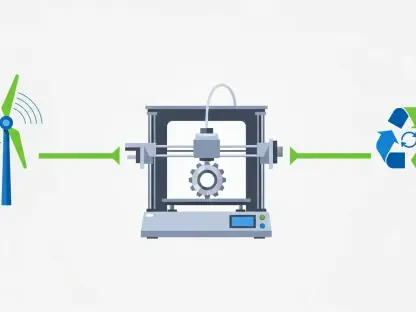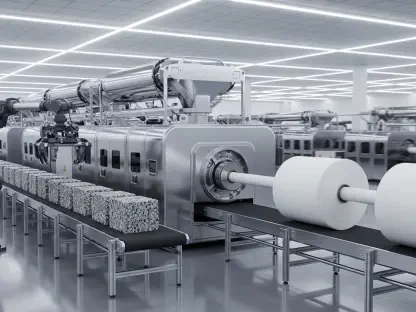The integration of artificial intelligence (AI) into predictive maintenance is transforming the electronics manufacturing sector. This shift has enabled unmatched efficiency, performance, and resilience in supply chain operations. This article examines how AI is revolutionizing maintenance processes, detailing improvements in operational uptime, quality control, and cost-efficiency. It also explores the challenges and future prospects of AI-driven maintenance strategies. AI has ushered in a paradigm shift from traditional, reactive maintenance approaches to proactive strategies. By predicting equipment failures and avoiding costly downtimes, AI-driven predictive maintenance ensures manufacturing operations remain seamless and uninterrupted.
AI-Powered Predictive Maintenance
AI technologies leverage vast datasets generated by sensors installed across production lines to predict equipment failures. These sensors monitor various parameters such as noise, vibrations, and temperature. AI algorithms detect any anomalies and alert operators to potential issues before they escalate into significant problems. This proactive approach guarantees timely maintenance interventions, maintaining high equipment performance and reducing downtime. Machine learning (ML) and deep learning (DL) techniques are frequently employed in predictive maintenance. By analyzing historical data, these algorithms can identify patterns indicative of imminent failures. This not only enhances maintenance scheduling but also optimizes resource allocation, ensuring maintenance teams address the most critical issues first.
The effectiveness of AI-powered predictive maintenance lies in its ability to continuously analyze real-time data and learn from historical patterns. The sensors embedded across production lines provide a constant stream of information, which AI processes to identify deviations from normal operations. When an anomaly is detected, the AI system triggers alerts or even automated work orders, prompting maintenance crews to take corrective actions before a potential failure occurs. Such a proactive stance ensures that production lines maintain optimal performance, drastically reducing unexpected downtimes and enhancing overall operational efficiency. This transformation from traditional maintenance methods to AI-powered strategies represents a significant leap forward in managing modern manufacturing environments.
Key AI Techniques in Predictive Maintenance
Various AI techniques enhance predictive maintenance effectiveness, including acoustic monitoring, vibration analysis, temperature monitoring, and ultrasonic testing. Each method uses AI to proactively identify potential malfunctions. Acoustic monitoring is an AI technique that mimics human auditory skills to detect abnormal equipment noises indicating possible issues. These noises might be too subtle for human detection, but AI algorithms can precisely identify and analyze them. This technique is particularly beneficial because it allows for the early detection of minor issues that could evolve into major problems if left unaddressed.
Vibration analysis involves monitoring and analyzing vibration patterns to predict mechanical problems such as misalignments or imbalances. Abnormal vibrations are a telltale sign of equipment wear and tear, and early detection ensures timely maintenance. AI systems excel in identifying these subtle changes, enabling maintenance teams to intervene before the damage worsens. Temperature monitoring tracks abnormal temperature variations, often signaling problems like overheating. AI models continuously monitor temperature data, identifying risky trends and triggering preventive maintenance before any damage occurs. This technique is crucial for maintaining the integrity and performance of sensitive electronic components that might otherwise suffer from thermal stress.
Benefits of AI Integration in Maintenance
Integrating AI into maintenance processes brings numerous benefits, such as improved quality control, reduced operational costs, extended equipment lifespan, minimized downtime, and enhanced operational efficiency. One of the most significant advantages is quality control, where AI ensures that all production equipment operates within specified parameters. This reduces the variance in product quality, leading to higher customer satisfaction and fewer recalls. By maintaining consistent quality standards, manufacturers can build and sustain a strong market reputation, translating into long-term business success.
Cost reduction is another crucial benefit of AI-driven predictive maintenance. By proactively addressing potential issues based on AI predictions, manufacturers can minimize unexpected repairs and extend equipment life. This reduction in emergency fixes results in significant cost savings, optimizing the overall maintenance budget. Additionally, regular and timely maintenance keeps equipment in optimal condition, prolonging its operational life. AI ensures that maintenance is performed only when necessary, preventing over-maintenance and unnecessary equipment wear. This not only extends the lifespan of expensive machinery but also optimizes resource usage, including labor and spare parts.
Overcoming Challenges in AI Integration
Despite the clear benefits, there are challenges associated with integrating AI for predictive maintenance. One primary challenge is the increased data bandwidth demands required to process large volumes of data in real-time. Companies may need to invest in advanced network solutions, such as dark fiber, to handle the data flow effectively. This robust digital infrastructure is crucial for ensuring the seamless operation of AI systems, which rely on constant data inputs to function accurately and efficiently.
System compatibility poses another significant challenge. Legacy systems may not seamlessly integrate with new AI technologies, necessitating substantial upgrades or complete overhauls. This compatibility issue requires thoughtful planning and substantial investment. Transitioning from older systems to AI-powered frameworks can be a complex and costly process, demanding careful consideration and execution. However, the long-term benefits of improved efficiency, reduced downtime, and cost savings often justify the initial expenditure. Addressing these integration challenges is essential for manufacturers looking to harness the full potential of AI-driven predictive maintenance.
Future Trends in AI-Driven Predictive Maintenance
The integration of artificial intelligence (AI) into predictive maintenance is revolutionizing the electronics manufacturing industry. This advancement has led to unparalleled efficiency, performance, and resilience within supply chain operations. By transitioning from traditional, reactive maintenance methods to proactive strategies, AI has brought about a paradigm shift. Predictive maintenance uses AI algorithms to forecast potential equipment failures, which helps avoid costly downtimes and ensures that manufacturing activities are uninterrupted and smooth.
This article delves into the transformative impact AI is having on maintenance processes. It highlights not only the benefits, such as enhanced operational efficiency and reduced costs, but also examines the challenges that come with implementing AI-driven maintenance. Future prospects for this technology are also explored, considering both its potential to further enhance industry standards and the hurdles that need to be overcome. AI’s role in predictive maintenance marks a significant leap forward for electronics manufacturing, providing a blueprint for increased efficiency and sustainability.









